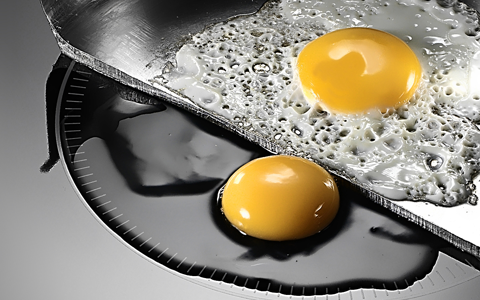What Types of Cookware Can You Use on an Induction Cooktop?
True kitchen enthusiasts are always open to innovation. While induction cooktops are no longer new, there are still many questions surrounding them. Let’s clear up the confusion and focus on what really matters—like steak or ice cream.
How Does an Induction Cooktop Work?
Short answer: It transmits electromagnetic waves to the cookware, which heats both the pot and the food inside it.
In detail: Under each burner lies a copper coil. When turned on, alternating electric current flows through the coil, creating an oscillating magnetic field. This induces an electric current in the base of the cookware, heating the cookware directly—without heating the surface of the cooktop.
Conclusion: The base of the pot or pan must contain a ferrous (magnetic) material to generate heat via induction.
Induction Cooktop – Pros
1. Efficiency
Induction transfers all thermal energy directly to the cookware, not the surrounding air. This means less heat loss, faster cooking times, and lower electricity consumption. Your kitchen stays cooler, and your energy bill might drop.
2. Safety
The surface doesn’t get hot—only the pot does. The cooktop heats only where it touches the ferrous base of the cookware. If there’s no contact, that “burner” stays cool, even when turned on.
3. Elegance
Induction cooktops are sleek and modern, with smooth surfaces, touch controls, and digital displays. They’re easy to clean—no grates or bulky parts. Just wipe and go.
Induction Cooktop – Cons
As with anything, there are downsides. Induction cooktops are typically more expensive. Also, they can be noisy on high power due to internal cooling fans.
The Big Challenge: Choosing Compatible Cookware
If you’re upgrading to an induction cooktop, you’ll likely need to replace some of your existing pots and pans. Only cookware with a ferromagnetic base will work. Test your current cookware by placing a magnet on the bottom—if it sticks, it’s compatible. If not, it won’t work with induction.
Types of Cookware That Work on Induction
1. Cast Iron (enameled or not)
Cast iron has been used for centuries—and for good reason. High-quality enameled cast iron from trusted brands like STAUB or LAVA ensures safety, durability, and elegant design. Though pricey, these pieces last a lifetime and deliver superior performance.
2. Carbon Steel (enameled or not)
A lighter cousin of cast iron, carbon steel is also suitable for induction cooking. Brands like De Buyer offer extremely durable woks and pans designed for professional or intensive use. It’s heavy enough for quality cooking, but manageable in the kitchen.
3. Some Stainless Steel Cookware
Only stainless steel pans that include a magnetic layer in their base are induction-compatible. Cheap stainless steel typically lacks this layer. High-end cookware often features multi-layered bases or full-body construction.
Look for cookware made with:
- 18/10 stainless steel: Durable, corrosion-resistant outer shell.
- Aluminum: Transfers heat 5× better than stainless steel.
- 18/0 magnetic stainless steel: Provides the required induction compatibility.
Top brands include Zwilling and Demeyere, which use carefully engineered multi-ply constructions.
4. Some Aluminum Cookware
Aluminum is not magnetic, so it requires a specially designed magnetic base to work on induction. German brand AMT Gastroguss includes induction-ready bases in many of their cookware lines.
Final Tip
Before you buy any new cookware, check whether it’s compatible with induction. Look for this info in the product description, packaging, or etched symbol on the base of the pan.


